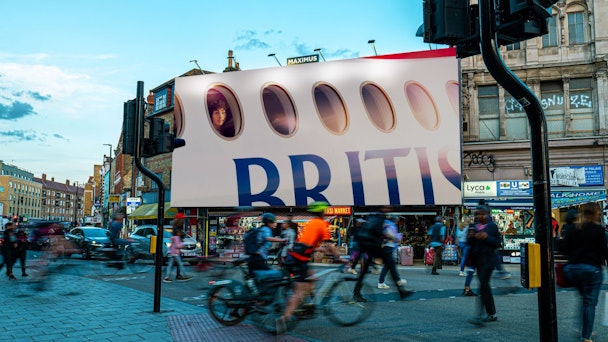The tyranny of culture and why it’s time to take advertising a bit more seriously
There’s no pandering to algorithms, no subcultures, and no trend-chasing in Uncommon’s latest BA creative. Saatchi & Saatchi’s Jonny Turnbull explains why it shows how we need to get more serious.

/ Uncommon
You’ve probably seen the latest British Airways posters. And the fake easyJet work that responded to it.
I have. I see them daily, whether on platforms, Piccadilly Lights or LinkedIn, where they are invariably accompanied by the lionization or jealous excoriation of Uncommon’s work. I happen to quite like the originals.
Not because of the *checks notes* art direction, the craft, the emotion, the simplicity, the boldness, the distinctiveness, the lack of a sales message, the bravery of the client, or any of the other myriad reasons the work has garnered plaudits. No, I like them because of the refreshing absence of culture. Or, at least, how adland understands culture.
That might sound like heresy for a planner, someone paid to - according to the industry dogma - help influence, shape or create it. But this rhetoric has become endemic; we read it in client briefs, hear it echo through creative departments and see it flaunted in agency credentials. But no one really asks the important questions:
What are we actually talking about?
And why are we all trying to do the same thing?
The Cambridge Dictionary defines culture as “the way of life, especially the general customs and beliefs, of a particular group of people at a particular time.” But all too often, adland seems to misinterpret the shaping of real culture for the surfing of ‘popular culture.’
Today we are content to force brands into the vicissitudes of the fashion cycle, social feeds, and the Hypebeast editorial. Yes, this might work for some brands. And, yes, it’s a welcome reaction to our work. But it should not be the principal aim of the work itself.
We shouldn’t confuse fleeting “talkability” with delivering business outcomes for our clients. And we certainly shouldn’t confuse it with changing the nation’s ways of living, customs or beliefs. That is just hubris.
Maybe this misunderstanding is why we have lost influence in the nation’s boardrooms and living rooms, politics and purchase decisions. While we should have been focusing on bottom lines and behavior change, we have fixated on fiddling with the architecture of what’s fashionable.
And we have done so without acknowledging this for what it really is - the same strategy, just executed differently. Which should be anathema to an industry that understands the importance of differentiation and distinctiveness and that puts the importance of creativity above all else.
This year will be defined by war and macroeconomic and political uncertainty. It took a once-in-a-generation cost of living crisis to force us to reckon with our industry’s obsession with brand purpose. We can only hope it doesn’t take societal shocks of that scale for us to reckon with the tyranny of culture.
So that’s why I smiled when I first saw those sunny new BA posters. Not because I worship at the altar of Graeme, Jameson and Leonard. But because it’s advertising, that’s comfortable advertising.
It suggested that the reckoning may already have begun. No pandering to the algorithms. No sign of a subculture or niche trend. No carefully chosen influencer to borrow reach and credibility. Nothing inherently “talkable,” though the adland village certainly indulged itself. Instead, it just quietly… works.
Yes, we are at the silly end of capitalism. But we have indulged in the silliness for too long, forgetting that our job is to influence people or policy profitably. Given the state of the economy, the anxiety of the people who power it, and the politics that steer it, advertising a bit more seriously may not be a bad thing.
Especially with reminders out there that we can do so while still creating work that reaches through the grime-smeared windows and grey morning drizzle.
Talk among yourselves.

